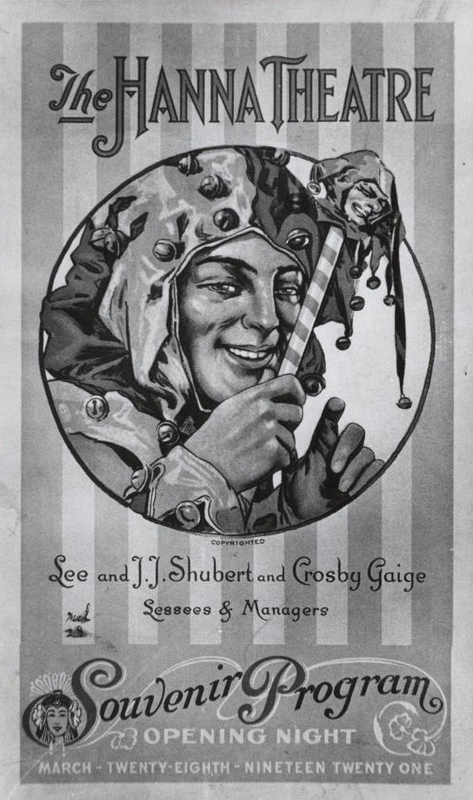Hanna Theatre

The Hanna complex, located in Playhouse Square, consists of the main building and the Annex, which connects the two buildings across Brownell Court. The structure was completed in 1921 and contains a total of 400,000 square feet. It was originally owned by Carl Hanna, grandson of industrialist and politician Marcus Alonzo Hanna, and the M.A. Hanna estate. In November 1958 the property was bought by T.W. Grogan, Vice-President and secretary of the Hanna Building.
Starting in 1945, the building went through its first three-phased modernization. The first phase was a complete renovation of the Continental Restaurant on the ground floor. The second phase was the modernization of the Hanna Theatre, located in the Annex. The final phase, in 1948, involved installing elevator units for the building. This took approximately 18 months to complete. The Hanna Building incorporated a top-of-the-line system by the Otis Elevator Company which used an electric brain to dispatch the elevators. This brain, the first in Cleveland and one of the first anywhere in the world, was state of the art and designed to pick up stray passengers left behind during the elevator rush hour.
By 1968, 85,000 square feet of office space had become a travel-related hub. The offices of twelve international airlines were located in the building, making it the largest airline conglomeration between Chicago and New York City. With the additional steamship and other various travel offices, there were a total of 24 travel companies in the Hanna Building.
Throughout its history the Hanna Theatre has been a major theater in the United States, attracting notable stars such as Katharine Hepburn. On April 26, 1971 a bomb was thrown outside the theater to protest the production of the play "Hair." The bomb bounced off the marquee and shattered windows in the Hanna Building and nearby storefronts.
The Hanna Building and Annex were added to the National Register of Historic Places in 1976 as a part of the Playhouse Square Group, the second largest theater complex in the United States after New York City's. In January 2008 the Hanna Theatre underwent a thorough renovation, bringing the theater into the 21st century.
Images








